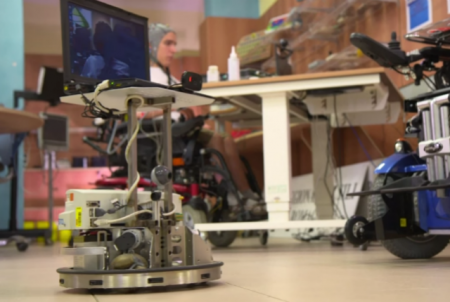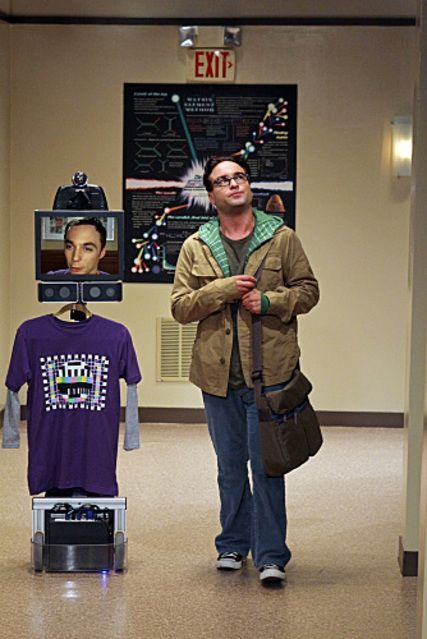November 30, 2015 – Research into brain-machine interfaces (BMI) is making it possible for those with severe motor disabilities to become mobile and interact with the physical world through telepresence. Italian and Swiss researchers working at the Ecole polytechniaue federale de Lausanne have done a number of studies with “motor-disabled end-users operating different brain-controlled devices…without the assistance of BMI experts.”
Approximately half the end-users mastered their BMI able to maneuver their telepresence robot and do text entry. The goal is to have BMI technologies available for those who are immobile giving them the means to move around in their homes or institutions and interact with family and the larger society.
In these tests the robot amounts to no more than a laptop computer sitting on top of a rolling base platform (remember Sheldon Cooper’s telepresence robot in “The Big Bang” episode and you get the idea).
But in this real world application the user signals the robot through a brainwave-detecting skullcap. The robot platform has its own vision control and guidance system and uses that to do route planning and avoid obstacles in its path. The user sees the world through a webcam and converses through a Skype window. The skullcap is covered with sensors that allow the user to imagine limb movement which then gets translated into basic computer commands – forward, backward, left, right, etc. The infrared sensors on the robot alert it to obstacles allowing it to follow the intent of the user without running into things.
Robert Leeb, one of the researchers on the project, states, “Imagine an end-user lying in his bed at home connected to all the necessary equipment to support his life….with such a telepresence robot, he could again participate in his family life.”
How many years will it be before we see wide use of BMI technology? For single-purpose devices such as a robotic arm it may be within a decade. But for a mobile BMI that gives an immobilized person the means to interact with the larger world, we are still a long way from a reliable, affordable commercial technology. Even in “The Big Bang” episode, Sheldon found himself unable to open his own office door. So as promising as the work at the Ecole polytechnique is currently, getting us to a point where the locked-in and the physically immobilized have full freedom of movement through telepresence appears to be many more years away.










